Explaining how direct mail automation helps ecommerce brands scale (+15 examples)

When was the last time you received a piece of mail that was exciting to you?
It could’ve been a holiday card, a postcard, or a birthday card from a close friend or family member. As long as it was from someone you know and love—and not a bill—it probably created some sense of joy.
Consumers also enjoy hearing from the brands they know and love. And as more businesses fight for consumer attention, direct mail is back in the marketing spotlight.
Marketers and business owners have been conditioned to believe that direct mail is time and labor-intensive. And they’re not wrong—it used to be. But today we’re witnessing a new era of direct mail services powered by automation and technology.
We’re witnessing a new era of direct mail powered by automation and technology.
While some businesses are still on the fence about adding direct mail, marketers who have added direct mail to their integrated marketing mix are reaping the benefits of this offline channel.
What is direct mail marketing? Why should ecommerce brands care about it? And most important, how can businesses take advantage of this rapidly evolving channel?
Let’s dive in.
Table of contents
- What is direct mail?
- Why should businesses adopt direct mail as part of their marketing strategy?
- Types of direct mail and their pros and cons
- How to send direct mail
- 15 direct mail examples—and what you can learn from them
What is direct mail?
Direct mail is physical correspondence delivered to a person’s mailbox through the postal service. Direct mail marketing is an offline channel marketers use to engage prospects and customers with promotional materials.
Direct mail marketing is nothing new. But up until a few years ago, the party line was that direct mail is no longer effective—especially compared to digital marketing channels like email, social media, and search.
The good news is we’re starting to see more of the pendulum swing back to direct mail. It just looks different than it did in the past.
The new generation of direct mail is personalized, measurable, and traceable, and it drives bottom-line results in acquisition, retention, revenue, and customer lifetime value (CLTV).
Before we dive deeper into direct mail examples and best practices, let’s cover the basics and address the most frequently asked questions about direct mail marketing.
How much does direct mail marketing cost?
When launching a direct mail marketing campaign, there are fixed costs that don’t change with the number of recipients (design, copywriting), as well as variable costs that are tightly connected to the number of recipients (mailing lists, printing, and distribution).
This means that the cost of direct mail solutions depends on the scope and complexity of your campaign—the total costs of direct mail are directly proportional to the number of recipients you target.
The bottom line: The more customers you target, the more expensive your direct mail marketing will be.
Should I focus on direct mail instead of email?
Short answer: No.
Direct mail vs. email marketing is not an either/or decision. According to The State of Direct Mail Consumer Insights by Lob and Comperemedia, 31% of people are more likely to engage with a brand when they receive multiple types of communication.
31% of people are more likely to engage with a brand when they receive multiple types of communication.
That means you should use direct mail to enhance your email marketing—not replace it.
The synergy between email and direct mail can help you reach your marketing goals while creating both a multichannel marketing approach and cohesive customer experience online and offline.
“Direct mail isn’t meant to be a replacement for email or SMS—rather it’s a way to enhance your workflows by giving you an additional channel that you can leverage to increase awareness and response to the message you’re promoting,” says Cameron Patterson, partnerships manager at Poplar.
“Consumers who receive consistent messaging across online and offline touch points are more likely to convert.”
Consumers who receive consistent messaging across online and offline touch points are more likely to convert.
Not to mention, a good marketing automation platform for email can help you automate direct mail at scale.
According to Lob, by automating direct mail, marketers can produce direct mail 150% faster. On average, project timelines are reduced by two-thirds, from 6 weeks to 2 weeks—or even days.
Why should businesses adopt direct mail as part of their marketing strategy?
Adding yet another channel to your marketing mix might feel overwhelming. So why should you do it?
In the past, direct mail has had a reputation for being too time-consuming and hard to measure. Neither of these things is true today.
Direct mail marketing has changed. We might even argue that the new business landscape requires a diversified marketing mix that includes direct mail to improve brand awareness and conversion efforts.
“Direct mail helps brands create a more well rounded marketing strategy, both for acquisition and retention,” says Patterson.
“It allows for a great deal of creativity in terms of formats and design, letting marketers showcase their product and build a brand. And it works—direct mail drives efficient results in acquiring and retaining customers across the board.”
Direct mail helps brands create a more well rounded marketing strategy, both for acquisition and retention.
Here’s why:
Owned marketing channels are more important than ever
Staying on top of different social media algorithms gets harder by the day, and it’s become more difficult to effectively target users due to data privacy changes. Even more important: Relying on a mail platform you’re not in control of makes your business very vulnerable.
Direct mail marketing allows you to use your own data and control the experiences you create for your target audience.
By reducing reliance on third-party data through owned channels like email and direct mail, you can decide how, what, and when you communicate with your customers—without an algorithm getting in the way.
Direct mail can help you diversify marketing channel spend
The iOS 14.5 privacy update caused a lot of headaches for marketers. The new feature, which allows iPhone and iPad users to opt out of tracking, gave people more control over their data. At the same time, it’s had a significant impact on businesses’ control over paid advertising.
If you’re one of the brands looking for ways to adjust to the tectonic shift of the iOS 14.5 privacy update, direct mail advertising is a great way to diversify your marketing channel spend.

There’s less competition
Unlike other channels where competition is cutthroat, direct mail can help you stand out and grab customers’ attention. According to The State of Direct Mail Consumer Insights by Lob and Comperemedia, direct mail has inspired 62% of consumers to take action (e.g., go to a brand website, purchase a product or service, etc.).
In a digital-first world, consumers are accustomed to digital communication. They don’t expect direct mail as much as they did in the past.
This can be a good thing. The novelty of direct mail might pique a customer’s curiosity about what’s inside the colorful envelope or interesting package they receive in their physical mailbox.
“In a noisy digital world, direct mail stands out as a real, physical, and tangible piece of communication that consumers respond to,” says Ritu Kappor, CMO at Lob.
In a noisy digital world, direct mail stands out as a real, physical, and tangible piece of communication that consumers respond to.
Types of direct mail and their pros and cons
Direct mail provides brand marketers with the unique opportunity to get creative with the content they produce.
There are different types of direct mail, each with its own advantages and disadvantages, giving marketers an array of possibilities to make a memorable impression. Below are a few types of direct mail you might consider experimenting with.
Catalogs and magazines
Pros: Catalogs and magazines are the most popular direct mail format among US consumers. More than 50% of each age group is most interested in receiving this type of mail, according to Statista.
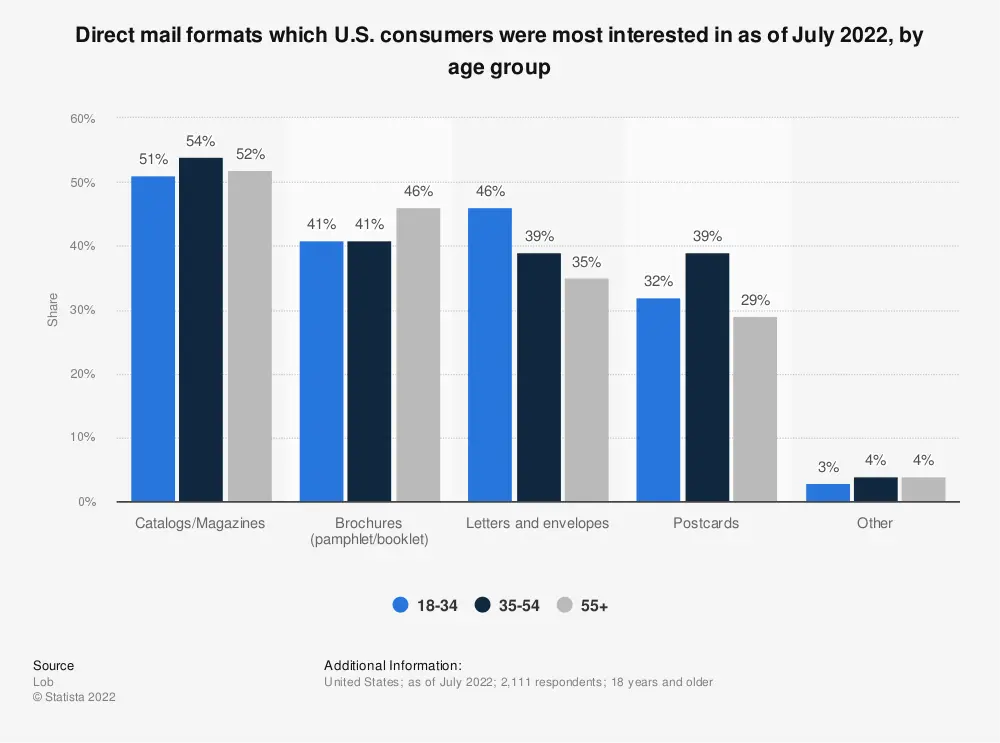
The question is: How can a centuries-old method of communication survive—and even thrive—in the digital age?
It’s simple—we live in a transitory world, so using catalogs with a longer shelf life than their digital counterparts will help you stand out.
Catalogs are particularly useful for brands with a large number of SKUs, which explains the home industry’s renewed obsession with catalogs.
Cons: Catalogs require significant time and financial investment compared to other types of direct mail. They are more like lookbooks and require high investment in product photography to effectively showcase different materials and options.
Postcards
Pros: A postcard is another popular type of direct mail marketing. Personalized postcards are cost-effective and quick to produce, and they stand out in the mailbox. You can also experiment with different postcard sizes and see what works best for your campaign.
If you want to add a more personal touch, consider including a handwritten note. The best part: You can automate the process by cutting out many manual processes.
Using the IgnitePOST and Klaviyo integration, you can pull data from different touchpoints and make targeted lists based on user behavior to create highly relevant, personalized marketing campaigns. Klaviyo’s segmentation capabilities, combined with IgnitePost’s personalized handwritten note service, unlocks a new channel for merchants.
Cons: You can only convey so much information using postcards, so you have to be clear and concise with your messaging.
Pamphlets and brochures
Pros: If you want to provide more information about your product or services, you can use a brochure. Direct mail is a smart approach if you want to deliver important details and specific information, but you don’t have the resources to print catalogs or magazines.
Cons: Keep in mind, brochures were very popular in the early days of direct mail marketing, which means they can feel old-fashioned or outdated today. If you do decide to try a brochure, consider creative ways for making them feel fresh and modern.
Inserts, flyers, and one-pagers
Pros: In cases where you want to provide more information or educate the customer, and a postcard is not enough, you might consider sending a flyer (also known as an insert or one-pager).
Cons: If you’re using this type of direct mail, it’s essential to make the most out of the available space. Don’t make it cluttered.
The bottom line is that each type of direct mail has its purpose, and it’s up to marketers to select the best format for a particular campaign.
How to send direct mail
The overwhelming prevalence of digitalization is constantly transforming marketing, tipping the balance in favor of digital channels. Adding direct mail to your marketing mix will bring offline and online experiences together, helping you increase outreach and customer engagement.
The question is: Where to start?
Here are 5 steps that will enable you to start capitalizing on direct mail marketing:
1. Integrate Klaviyo with direct mail software
The first step is integrating your marketing automation platform with direct mail software. If you want to scale your direct mail marketing efforts, this step is vital. It will allow you to trigger direct mail based on the data you collect, so that it sends automatically when a subscriber meets certain criteria.
Imagine implementing a direct mail campaign manually. Sounds scary, right? Every business that has performed a direct mail campaign manually knows it’s a cumbersome and time-consuming process. The good news is that it doesn’t have to be.
With direct mail automation, you can use event triggers, personalization, and analytics to streamline efficiency and yield positive results. Here’s how to do it:
- Automate postcard campaigns using the Klaviyo and PostPilot integration: PostPilot allows businesses to send personalized one-off and triggered campaigns to cut through the digital clutter.
- Automate direct mail using the Klaviyo and Lob integration: Lob is a direct mail automation platform that transforms repetitive processes into intelligent mail that is scalable, personalized, and measurable.
2. Collect consent
Collecting consent is one of the marketer’s biggest headaches, especially in light of the latest privacy updates and data protection regulations such as GDPR.
While a direct mail campaign does not require the same consent as other marketing channels, such as email and SMS, you still need to meet the legitimate interest test.
In other words, you must ensure your campaign targets people who would benefit from your direct mailing.
Klaviyo keeps track of whether someone opts into direct mail and allows you to upload and segment lists based on consent.
In Klaviyo, you can collect consent in two ways:
- Based on a customer’s interaction with your brand, such as subscribing to email or SMS via a GDPR-compliant Klaviyo form, or opting into marketing at check-out
- Manually adding by importing a CSV file of consented profiles into a list
3. Further define your audience
Your direct mail campaign should start with a goal in mind. Whether that’s customer acquisition or retention, you must precisely segment and target your audience to deliver the right message and follow up with shoppers at the right time in conjunction with other touchpoints in the customer journey.
“I think there are so many unique ways any brand, no matter the size or vertical, can roll out a successful direct mail campaign,” says Scott Kramer, VP of growth at AS Beauty. “The main thing to think about is how is it going to either help improve performance or solve a problem that you currently believe exists for your business?”
Data from The State of Direct Mail by Lob and Comperemedia shows that marketers rely on direct mail for existing customer campaigns (29%), new customer acquisition (27%), advocacy and referrals (22%), and dormant/churn win-back (21%).
A common best practice is to start by using direct mail for customer retention—win-backs, abandoned carts, and post-purchase campaigns, to name a few. This way, you’ll be able to reach customers who are not opening your emails, have unsubscribed from your email list, or never subscribed in the first place, says Drew Sanocki, co-founder of PostPilot.
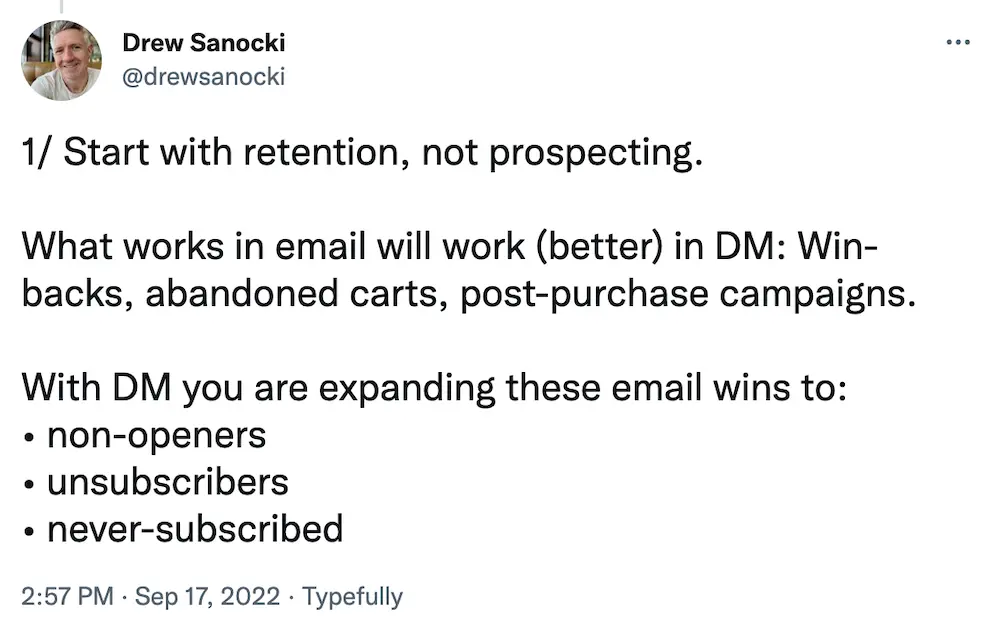
In the new age of rising customer acquisition costs (CAC), marketers add direct mail campaigns to keep existing customers engaged using cross-sell, up-sell, and education. Once customers are happy, you can use direct mail marketing to encourage advocacy, positive reviews, and referrals.
“There is so much power in creating segments in Klaviyo and then syncing up email and direct mail campaigns,” Sanocki points out. “After all, typically only ~50% of previous buyers subscribe in the first place, and of those only ~20-30% open emails. That leaves ~80% of previous buyers that brands cannot contact—unless they use direct mail.”
There is so much power in creating segments in Klaviyo and then syncing up email and direct mail campaigns.
After you get ROI on retention programs, you can tackle prospecting. Besides geographic targeting, you can also test behavioral targeting and lookalike audiences.
Direct mail marketing can get costly, so focus on targeting and creating a specific offer to entice prospects.
When Meng Li, founder and CEO of Huhu and former VP of marketing at Native, wanted to expand user acquisition channels beyond Facebook, direct mail—along with a few other marketing channels—was a prime candidate for testing.
“Because conversion was the main KPI, doing lookalike modeling was the audience target that made the most sense and had the highest likelihood of success,” Li explains.
4. Optimize your direct mail design
One of the key ingredients of a successful direct mail campaign is creativity. You can create an impactful campaign and drive bottom-line success by combining eye-catchy imagery, attention-grabbing copy, well-designed templates, and a clear and concise call to action (CTA).
More tech-savvy direct-to-consumer (DTC) brands than ever before have a distinct visual identity and unparalleled attention to detail—and they’ve raised the creativity bar, especially for direct mail marketing.
Optimize your direct mail design with more storytelling, designs that breathe, and effective messaging.
5. Test, optimize, repeat
If you want to incorporate direct mail as part of your marketing mix, you must adopt the “test and learn” mindset. You can always start small and later optimize based on the performance.
From different segments and types of direct mail to changes in the design, copy, or CTA, the testing and optimization possibilities are almost endless. Understanding when is the right moment to start implementing direct mail marketing is also crucial.
“For retention campaigns, the biggest factor is the number of customers in your database,” says Ben Semmar, CEO of Rock City Lab. “Direct mail costs more than email, so profitability plays a bigger role. You need to target enough people so that you can convert a high enough volume of customers to break even (at a minimum).”
According to Semmar, brands that have been in business for 18+ months and/or are generating >$1M in annual revenue “should be at least testing direct mail. Subscription brands might be able to start sooner due to the higher purchase frequency inherent to that model.”
In the past, businesses had to grapple with legacy direct mail processes. But today, thanks to automation, you can personalize, track, and measure the results. The ultimate goal is to maximize the results of your direct mail marketing.
15 direct mail examples—and what you can learn from them
Direct mail marketing is all about creativity. If you need inspiration for your next direct mail campaign, take a look at the following ideas from 15 innovative brands:
1. Noonbrew
NoonBrew is unique in every way. For one, it’s not your typical iced tea. But it also has a very specific marketing approach. The organic iced tea brand uses direct mail to win back customers with a special offer and a discount code.
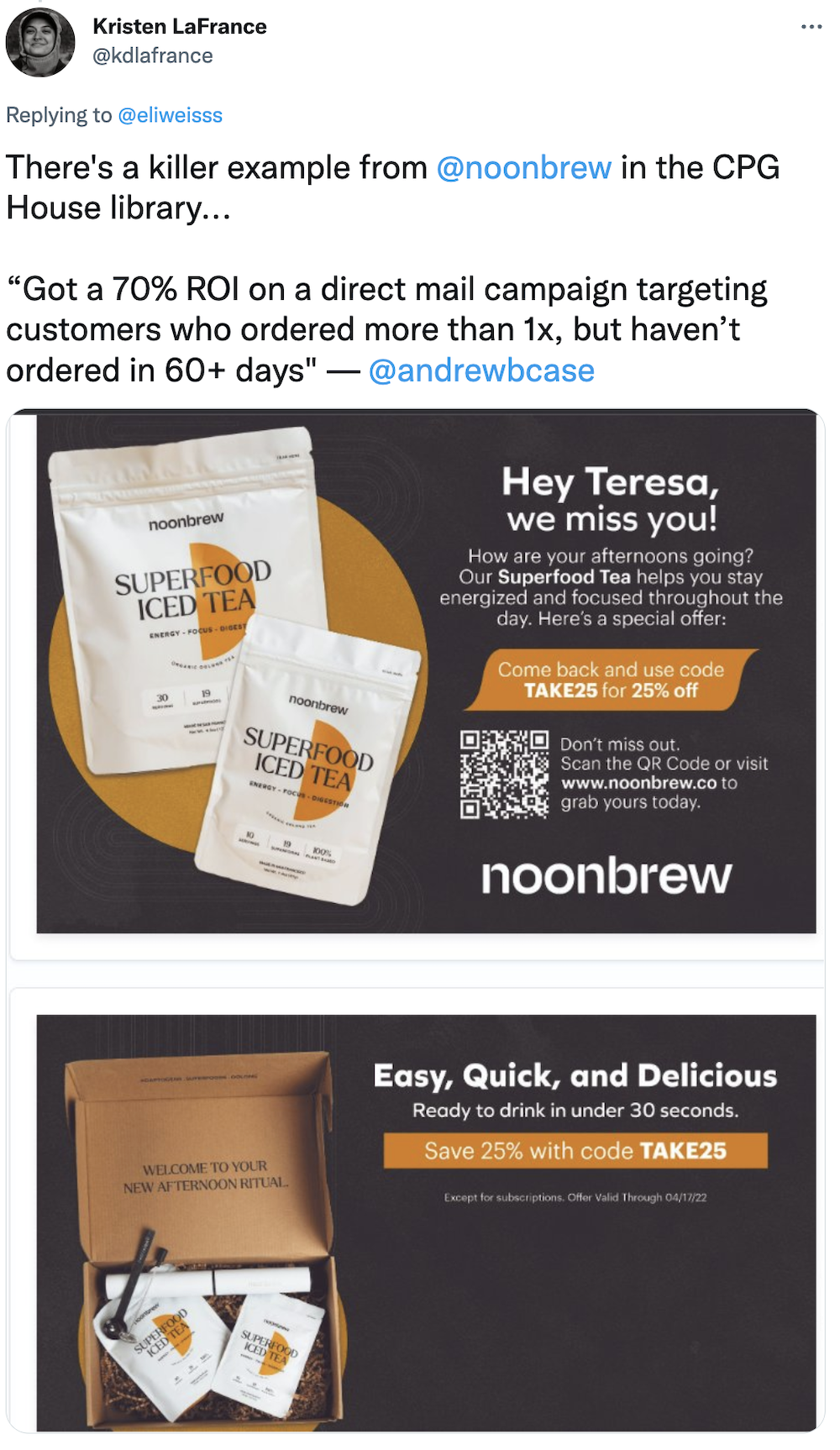
NoonBrew earned a 70% ROI on a direct mail campaign targeting customers who ordered more than once, but hadn’t ordered in more than 60 days, according to Andrew Case, CEO and co-founder of NoonBrew.
2. Obvi
Nutritional supplements brand Obvi wanted to offset high ad costs and reach dormant customers. So they used direct mail.
Obvi set up a VIP win-back segment with approximately 1.1K customers that last ordered 90-120 days ago, but had ordered more than twice since becoming an Obvi customer. Obvi’s typical reorder rate is 45 days, so anything outside 90 days is a win-back.

Obvi’s team measured two sets of ROI—direct unique coupons only found on the postcard, and “view through sales” (someone who bought within 14 days of getting the postcard)—and they scored mindblowing 1,000% return on investment.
This campaign included a unique coupon code for each card, as well as a dynamic expiration date to urge customers to use the code.
3. Parachute
Parachute started as an online-only DTC brand focused on creating impeccable bedding. Soon after that, the brand expanded and opened several brick-and-mortar stores.
Like many other DTC brands, Parachute was looking for ways to diversify its advertising mix and rely less on Facebook and Instagram. They introduced direct mail—with a twist.
The bedding brand understands the importance of getting noticed, so they focus on eye-catching catalog covers that are often “conversation starters.” One of their recent catalog covers, featuring a woman repotting plants in her bedroom, had people buzzing across social media channels.

As mailboxes get more crowded with direct mail, brands must think of creative ways to stand out from the crowd. Parachute knows how to do it.
4. Gainful
Gainful is a performance nutrition brand that bets on personalization. The brand asks website visitors to take a quiz. Based on their responses, subscribers receive personalized supplement recommendations to help them reach their goals.

What makes Gainful different from other brands is its approach to abandoned cart recovery. Besides an extensive email and SMS sequence, they send direct mail with a code customers can use at check-out to get a discount.
5. Brooklinen
The DTC bedding brand Brooklinen uses short, eye-catching, engaging copy to capture consumers’ attention. The brand highlights its strongest selling points from the start using its popular tagline “Meet the internet’s favorite sheets” and emphasizing luxury bedding without luxury prices.
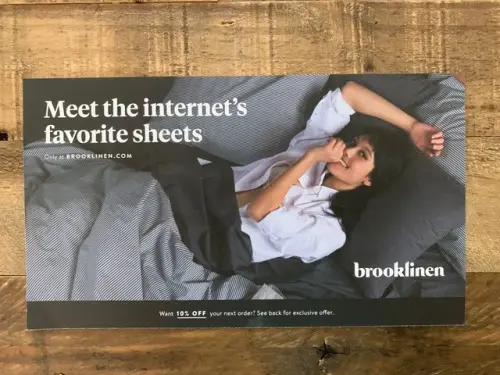
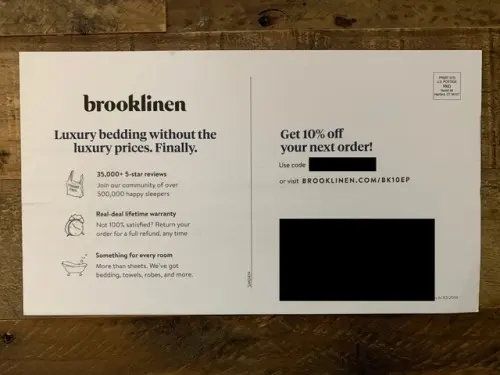
Brooklinen offers customers an incentive with a discount code for their next order. This piece stands out due to its clean design and enticing copy that gets straight to the point.
6. Felix Gray
Eyewear brand Felix Gray offers customers proprietary blue light-filtering lenses paired with timeless, hand-finished frames. But that’s not all they’re good at. The brand also understands their consumers’ biggest pain points—and how to address them.


In one of their direct mail campaigns, Felix Gray covered the most common symptoms people face as a result of spending too much time in front of screens—a problem pretty much everyone can relate to.
Felix Gray also quoted some of the most popular media, such as Forbes and BuzzFeed, to increase consumer confidence and encourage them to make a purchase.
7. The Sill
The Sill is an online plant shop that offers plants, resources, and even merchandise for everyone from beginners to experts. Besides being known as one of the most popular online house plant retailers, The Sill does a great job crafting not only catchy email subject lines, but also direct mail taglines that spark interest.


In this example, the brand provides answers to some of potential customers’’ most common questions around care instructions, delivery, and returns—all in just a few sentences. Apart from the discount code, The Sill also shares its brick-and-mortar locations and social media handles to invite consumers to make a purchase.
8. Beardbrand
Rising consumer acquisition costs have made retention more important than ever. Aware of this truth, men’s grooming company Beardbrand launched a win-back email campaign to reach “unreachable” customers using high-quality postcards.

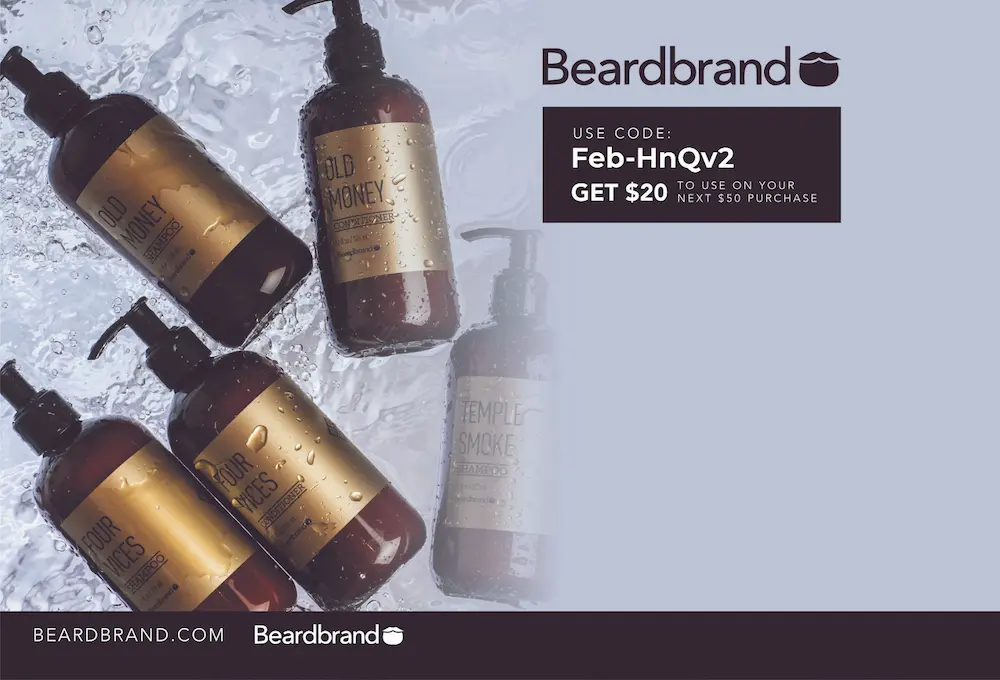
The campaign targeted customers who had shopped from the brand at least 3x but hadn’t made a purchase in at least 6 months. Since Beardbrand rarely discounts its products, adding a coupon code in the postcard made the offer irresistible.
The brand used single-use unique coupon codes (SUCCs), which made attribution straightforward.
With this single direct mail campaign, Beardbrand earned $13K in sales—clocking an ROI of almost 2,500%.
9. Andie
Swimwear brand Andie creates stylish yet comfortable staples engineered for modern life. The brand includes direct mail in its marketing mix to engage customers and cut through the digital noise.


In one of its campaigns, Andie sent a postcard to its customers to promote black swimsuits, offering a 10% discount. The brand used short and compelling copy and included swimsuit prices. To wrap things up and add a bit of social proof, they also quoted Vogue.
10. Urbani Truffles
Urbani Truffles is the world-leading distributor of fresh Italian truffles and truffled products. Although they sell a specific product, Urbani faces similar marketing challenges as other ecommerce brands.
When Apple’s iOS privacy changes had a significant impact on the effectiveness of Urbani’s online ads across platforms, Urbani added direct mail to their integrated marketing mix.
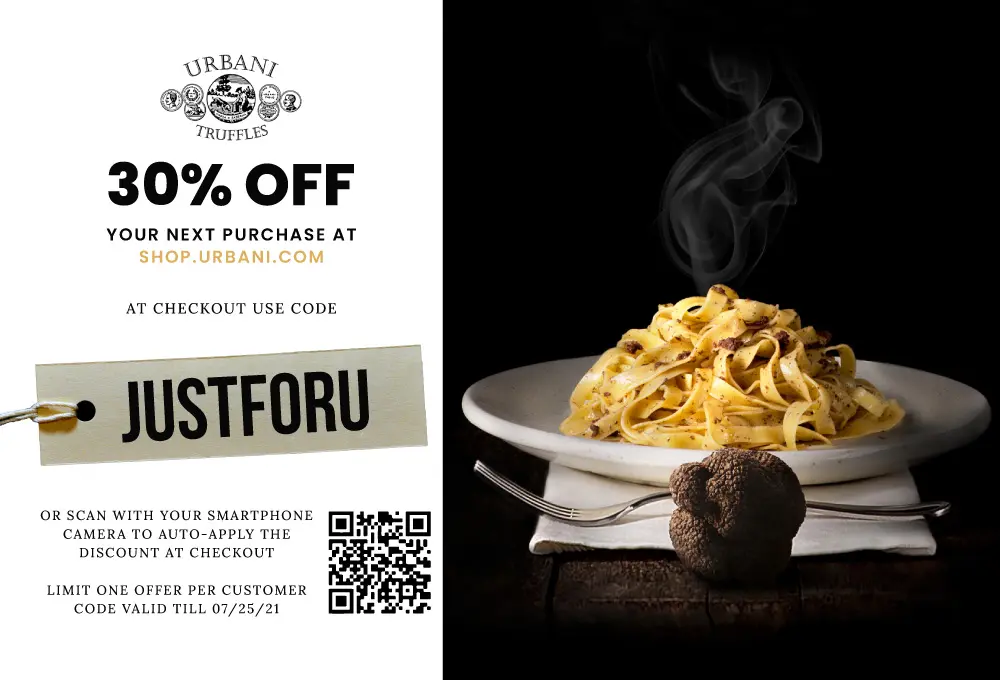
To reactivate dormant customers, Urbani launched a direct mail campaign during peak season. The brand opted for an elegant, minimalist design with a friendly message, offering customers a discount code.
Urbani’s campaign yielded an ROI of 1,518% and brought customers back onto the email list. After this initial success, the brand continued using direct mail as part of its marketing efforts. With a later postcard campaign, Urbani earned $80K in sales and an impressive 1,700% ROI.
11. Promix
In an effort to present the brand outside the digital space and make it memorable, Promix’s CEO, Albert Methany, decided to use the power of direct mail.
Promix started with a VIP win-back campaign, targeting high-value customers who hadn’t placed an order in at least 180 days. The postcard was clean and minimalist, highlighting Promix’s best-selling products. Another touch was the personalized message—signed by the co-founder.
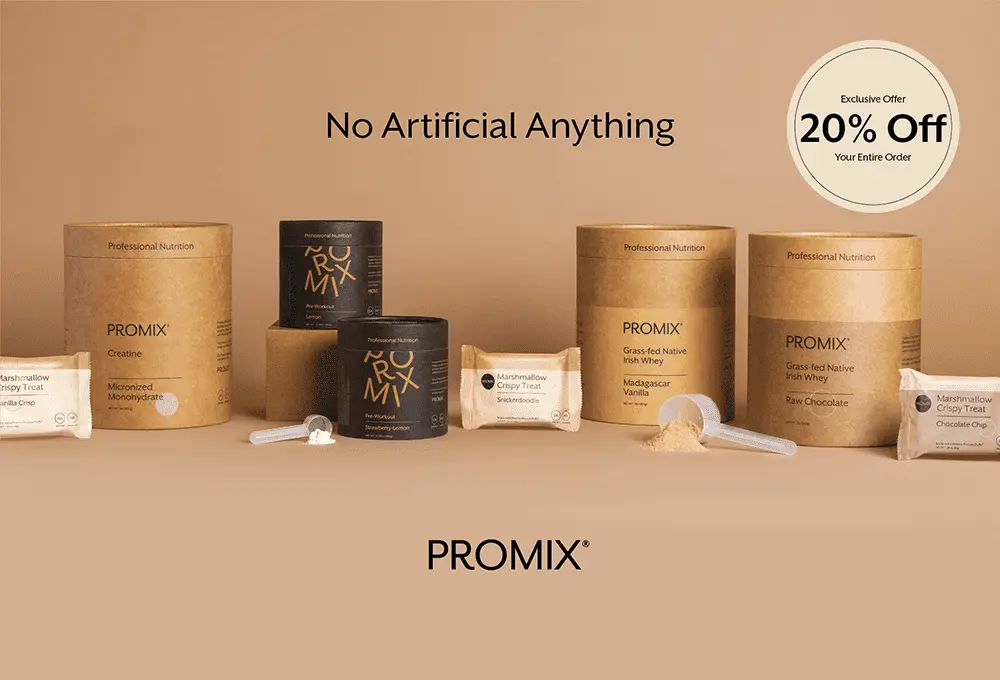

To make attribution easier, the brand included a unique QR code that allowed the team to track results. And they were outstanding. The kick-off campaign brought in $4.3K in sales for an impressive 1,143% ROI.
12. CYSM
Family-owned DTC shapewear brand CYSM puts segmentation at the heart of its business. Launching different campaigns for specific customers requires a focus on targeting and personalization. Direct mail is no exception.
CYSM often runs one-off campaigns around relevant holidays, back-in-stock notifications, and postcards for high-intent browsers to turn them into buyers. But the brand also runs automated lifecycle campaigns.


Postcards are now a regular part of the CYSM marketing mix, and they’ve become one of the brand’s core channels for driving incremental revenue and retention. With more than 100 direct mail campaigns, CYSM knows what works best for their customers, so it’s no wonder their campaigns consistently generate 1,000%-1,500% ROI.
13. Bulletproof
DTC brand Bulletproof focuses on repeat purchases and high LTV, both of which are critical for the success of supplement brands. While the brand uses email for re-engagement campaigns, they also wanted to include direct mail to reach unengaged email subscribers.

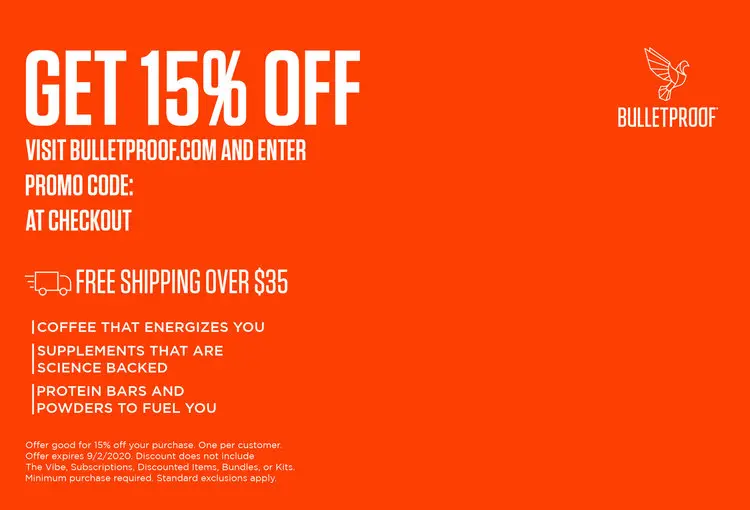
This postcard design is clean and minimalistic, but it still contains all the necessary information—promo code, shipping information, and offer expiration date. Bulletproof’s campaigns consistently generate a staggering 1,000% ROI, with some over 4,000%.
14. Native
DTC brand Native Deodorant complements its digital strategy by adding an offline channel to the mix. The brand executed many performance-based direct mail campaigns focused on sales conversion.
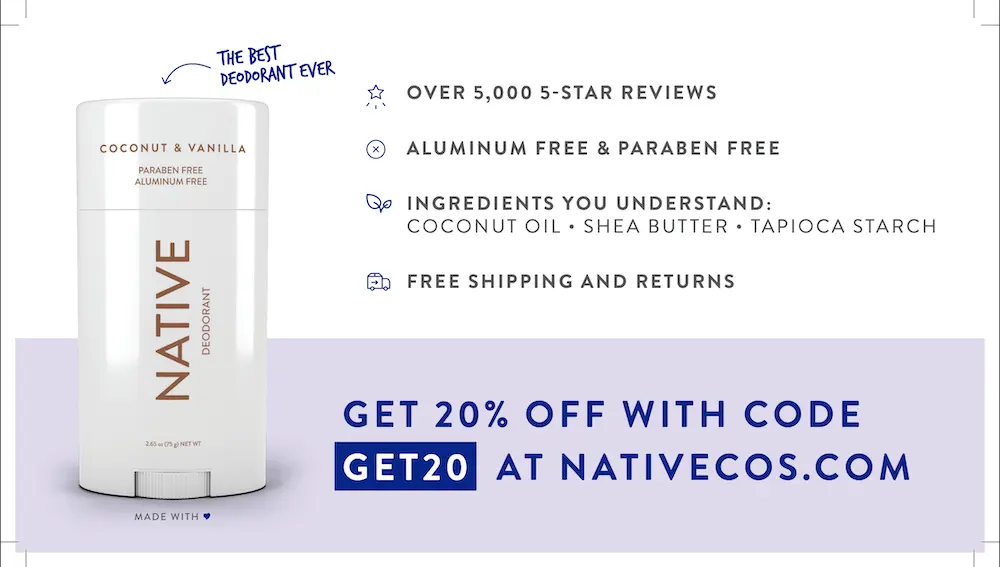
Native mailed out both solo direct mailers and shared mailers. “For the solo mailers, we mailed them out to lookalike audiences based on our existing list of most engaged and high value customers,” Li explains.
“For shared mailers, it was to lists of people that was demographic/psychographic based—e.g., women ages 24-45 who live in metropolitan regions and have a high propensity to purchase health and wellness products,” Li continues.
Native also tested geo-targeted shared mailers (e.g., mailers to consumers in the San Francisco Bay Area, Los Angeles, Seattle, etc.). Based on matchback analysis, they saw a 1.5-3x ROI for direct mail programs.
15. RunGum
RunGum is a performance-enhancing chewing gum that fuels the world’s top athletes. The brand uses technology to power its ecommerce growth, but wanted to test an offline touchpoint as well.

Using direct mail, RunGum launched a win-back campaign targeting customers who hadn’t made a purchase in the last 360-720 days. The clean design and eye-catching copy turned out to be a win for RunGum—and one more point of proof that direct mail is a great tool for customer re-engagement.
Ready to automate direct mail with Klaviyo?
We’ve entered a new era of direct mail marketing. The power of automation and technology has transformed direct mail, making it personalized, easy to track, and, most important, effective.
Some of the most tech-savvy DTC brands and small businesses are already witnessing bottom-line impact by incorporating automated direct mail as a core component of their omnichannel marketing strategy.
The best part: Now, you can use a marketing automation platform to scale your direct mail marketing efforts and create an integrated buyer journey from start to finish.
Direct mail FAQs
What are some direct mail automation best practices?
Some best practices for setting up direct mail automation flow include:
- Segmenting your audience based on behavior or interests
- Personalizing your direct mail pieces with relevant content and images
- Using clear and compelling calls to action
- Testing and optimizing your campaigns to improve performance over time
- Using tracking and analytics to measure the effectiveness of direct mail automation campaigns
How to choose the right direct email automation tools?
Choosing the right direct mail automation tool can have a significant impact on the success of your marketing campaigns. Some factors to consider when choosing direct mail automation software:
- Features: This may include functionalities such as list segmentation, variable data printing, customer data tracking and real-time analytics.
- Integration: Consider whether the direct mail API integrates with your existing ecommerce CRM or marketing automation platform.
- Usability: The tool should be user-friendly and require minimal training to get started.
- Customer support: Look for a direct email automation tool that offers responsive customer support and resources such as documentation, tutorials, and webinars.
- Reputation: Look for a tool that has a strong track record of success and positive reviews from users.
- Scalability: Consider whether the tool can scale with your business as your needs grow.
How to measure the success of automated direct mail campaigns?
Measuring the success of automated direct mail campaigns is essential to understanding the
effectiveness of your marketing efforts and making data-driven decisions for future campaigns. Here are some key metrics you can use to measure the success of your automated physical mail campaigns:
- Response rate
- Conversion rate
- Return on investment
- Customer lifetime value
- Engagement

Related content
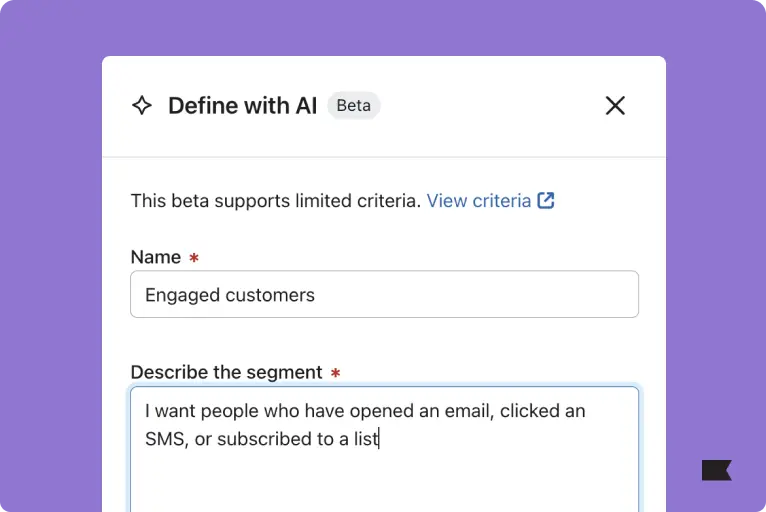
Learn 6 ways brands use AI in marketing automation to target audiences, create content, personalize, predict churn, benchmark, and manage reviews.

Unlock the power of customer journey mapping to boost email revenue. See how mapping every touchpoint builds loyalty, retention, and lasting growth.

Discover 6 last-minute BFCM tips: optimize Klaviyo flows, re-engage buyers, protect deliverability, and schedule campaigns to maximize sales.